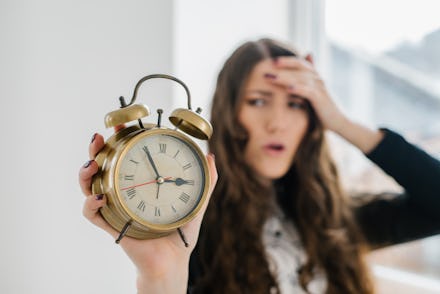3 big numbers that show daylight saving isn't just annoying — it's bad for the economy

Feeling groggier than usual? You might have gotten an extra hour of sleep over the weekend, thanks to gaining an hour on Sunday from the end of daylight saving time. But for many Americans, the adjustment actually throws off sleep cycles, and it may take as long as a week to get back to normal — and that hurts productivity.
That's just one reason the biannual re-setting of American clocks is controversial.
Begun as a way to save energy during World War I and World War II, daylight saving time was eventually made the law of the land for most states in Uniform Time Act of 1966, backed by the U.S. Chamber of Commerce.
In fact, as the Daily Beast notes, retail stores are by far the biggest beneficiary of the practice when the clock moves forward in springtime, because people are more likely to shop on their way home when it's light outside.
Or at least that was the idea at the time: Recent research has cast doubt on that assumption — among others.
Here are three numbers that suggest daylight saving time is as wasteful as it is annoying.
Daylight saving time costs us $434 million in lost productivity.
Daylight saving's disruption of sleep cycles has been shown to increase workplace injuries and decrease productivity.
These effects mostly happen in the spring, when we set our clocks back: Overall, the lost hour of sleep costs the economy as much as $434 million in lost productivity.
Much of the effect is because of an uptick in workplace injuries: People make more mistakes when they're sleepy.
But researchers have also shown that "cyberloafing" — a fancy word for, say, messing around on Facebook when you're supposed to be working — also spikes the day after daylight saving time goes into effect.
You'd think that might be worth it, if people make up for lost productivity after gaining an extra hour in the fall — but that's not the case.
Daylight saving might waste more than $400 million worth of energy.
Turns out the argument that daylight saving time conserves energy actually doesn't hold up very well.
In a paper from the National Bureau of Economic Research, authors Matthew Kotchen and Laura Grant estimate that in Indiana alone, daylight savings time leads to an extra $9 million in electricity bills.
Why? Even though daylight saving time decreases demand for lighting, it actually increases demand for air conditioning and heating — which cancels out any benefits.
Researchers note that regional differences make it hard to extrapolate what the Indiana figure might be for the whole country. But if every state with daylight saving spent in line with what Indiana drops on extra electricity — based on population size — the grand total would be more than $400 million.
Daylight saving may reduce consumer spending by as much as 4%.
One of the biggest arguments for daylight savings time has been that it can spur spending: When there's more daylight, people are more likely to shop.
But that long-held assumption might not be so true, at least according to a recent JP Morgan study that found daylight saving's ending in autumn hurts consumer spending — reducing it by as much as 4.9%, depending on which state you look at.
That would be fine if spending recovers in the spring, when shoppers gain an hour of daylight.
But it turns out gains don't typically outweigh losses: In Los Angeles, the net effect was still a loss — of 2.6% — and in Denver the reduction in spending was 4.1%, according to the study.
JP Morgan noted that there are certainly other benefits to daylight saving time, like possible crime reduction. But considering the law was largely put in place to boost spending, the study shows it might be pretty useless on that front.
Indeed, there's a strong case that the United States would be better off if we simply left our clocks in "spring forward" mode year-round.